
Divide & Conquer
Ed Sheeran’s unlikely tilt at the ‘world’s most popular performer’ crown takes him on a worldwide stadium tour. AT talks to the sounds guys who are ‘levelling up’ to hang on for the ride.
Photos: Andrew Bennett
It’s the sound guy equivalent of winning Powerball. Like hitching your wagon to a bullet train. No one could predict it and nothing could prepare you for it. One minute you’re chugging along on the daily grind, the next minute you’re on a white-knuckle 300kph ride, using all your strength just to hold on.
“I came on board for a two-week run. I was then asked to continue to do some one-off promotional shows. We had some early success over here in Australia which we followed with a couple of shows. Things then started to tick along in the US, so we flew to America. And before you know it we were doing a show at Madison Square Garden! We’ve been touring pretty much constantly ever since.”
That’s FOH engineer, Chris Marsh’s remarkable story; a story he relays from the front of house position in the middle of Etihad Stadium in Melbourne; a stadium Ed Sheeran sold out four nights in a row. I think some bright spark crunched the numbers and estimated about one in every 20 Australian adults saw Ed live. It’s truly phenomenal.
This tour sees Chris and system engineer Charlie Albin moving from touring arenas to stadiums. It’s yet another ‘pinch yourself and get on with it’ progression for the two.
“It’s a bit of a learning curve doing spaces this size,” admitted Charlie. “But we’ve been finding our feet reasonably quickly.”
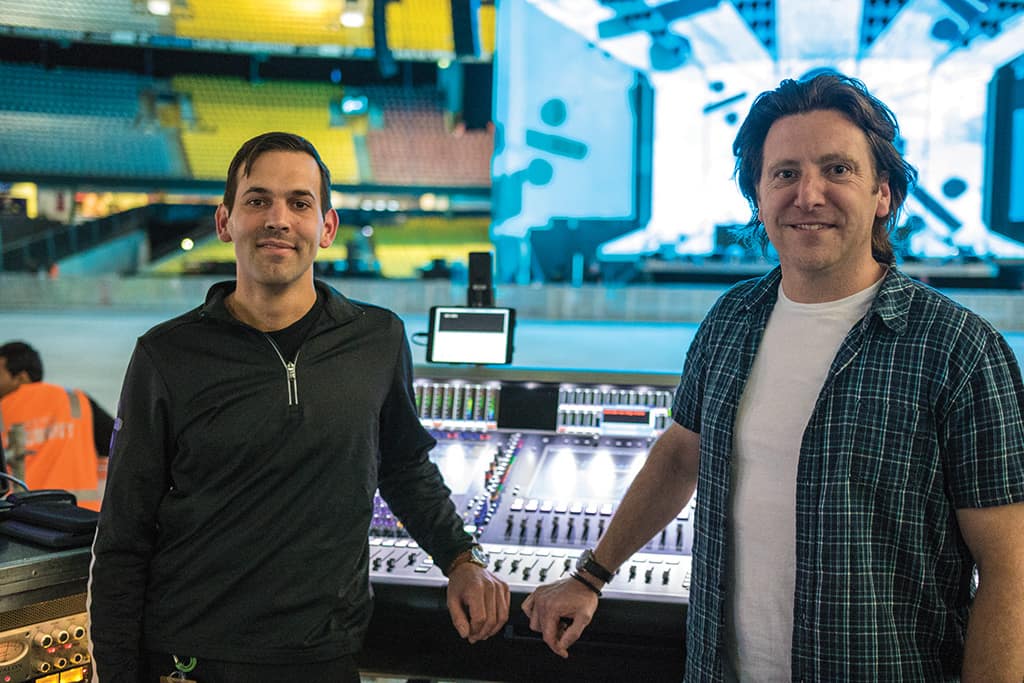
BUSKING IT
In many ways, Ed Sheeran is the world’s biggest-name busker. He’s not needed to change much about his show since those 2011 performances. It’s him, his guitar and a loop pedal. And he performs like he might do to a small crowd in a train underpass: he’s relaxed, chatty and genuinely appears to be having a fun time. The fact there are 50,000 people in the audience rather than 50; and he’s clearing a king’s ransom rather than loose change doesn’t seem to phase him in the least.
Chris Marsh: “My mix is all derived from Ed’s acoustic guitar and vocal. I take the guitar as a clean feed, before it goes to his looper. Ed has four guitars: two small guitars, and two larger guitars for ballads. The Digico SD7 creates a matrix, sending a feed to his Loop Station and then Ed records multiple loops for certain songs which include rhythm parts, lead parts, and rhythmic parts (where’s he’s actually slapping the guitar to rhythmic effect). He’ll also create vocal loops using a different microphone, building up harmonies or beatboxing. I end up with around 16 channels of inputs from two sources.
“We use a Sennheiser 9000 series wireless mic system. There’s an MD9235 capsule on his lead vocal transmitter and a 934 capsule on the loop vocal transmitter. The 934 capsule has a much tighter pickup pattern which is important when he’s building his loops. The noise of the crowd is quite intense, particularly after 30 seconds when they figure out what song he’s about to play. If you’re not careful you can end up with spill from the audience screaming and that will get repeated every 12 beats for the six-minute duration of the song. It’s something of a distraction.
“The 9000 series system also handles the guitars. Everything stays in the digital domain until it reaches the PA.
“The wedges on stage are Meyer Sound MJ212s and they’re supplemented by two Meyer 900 subs. He uses a Sennheiser SR2050 IEM system. We have a guest set of ears, just in case, and the techs backstage have a set so they can hear what’s going on. It used to be very loud on stage but since Ed’s started using ears more and more, the stage level is much quieter so techs do need to be on ears. There is no monitor engineer, everything is handled by the SD7.”
Ed is quite happily cocooned in Ed World on stage. Chris reckons Ed hasn’t requested a change to his mix or setup for years. Which explains why Ed never asks for a sound check, and Chris and Charlie have never requested one.
“From my point of view there’s not a huge benefit from him coming in. Now we’re playing to stadiums, even less so. The reference of Ed playing to an empty stadium… it’s vastly different to when it’s full. Everything changes.”
Ed’s so happy that he’s very supportive of Chris and Charlie in their efforts to keep levelling up with technical upgrades — so long as nothing changes in Ed World.
One big change was moving to the Meyer Sound Leo rig.
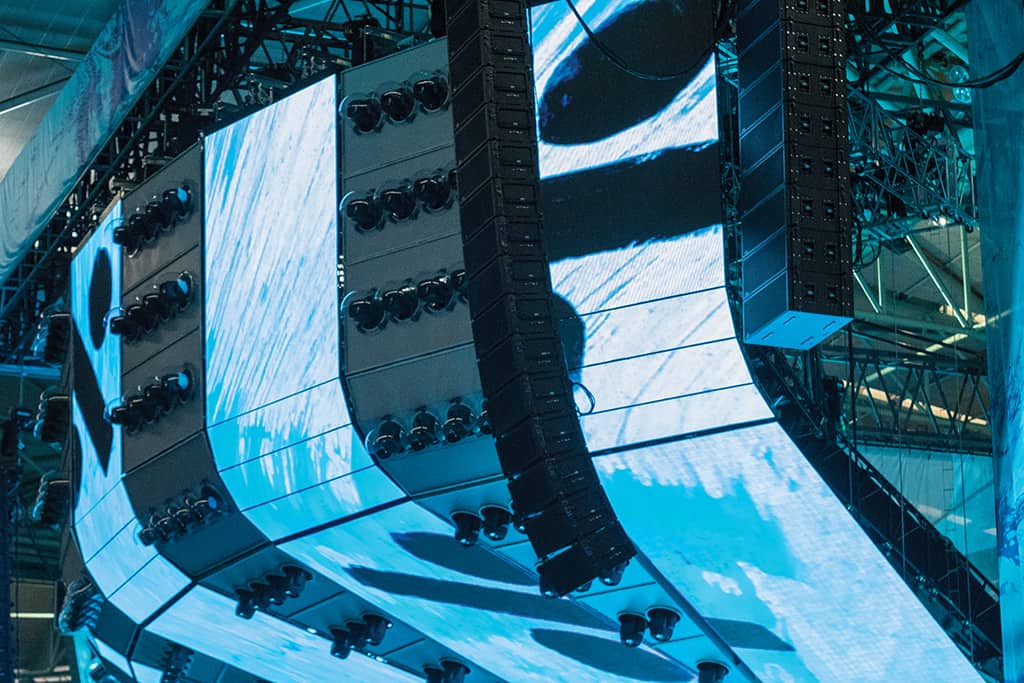
LEO THE LION ARRAY
Chris Marsh: “I’ve been a fan since Meyer came out with Milo. To my mind Milo was the first system I felt delivered next generation performance to [L-Acoustics] V-DOSC. Personally, I think nothing else until Milo offered a reason to switch from V-DOSC — it’s a PA that’s been an industry leader for a long time. Milo came out as a great competitor in every way, and not just a competitor; Milo had a more defined high end, I just found it much clearer, so we started using Milo.
“We had a one-off opportunity to give Meyer’s Leo a go for a Belfast arena show a few years ago. The difference between the Milo and Leo was remarkable. Ed’s loops can get very, very complicated, when he over-loops and over-loops. There’s an awful lot of texture in what he’s playing and while a lot of PAs will allow that to be heard, the definition gets lost within all the loops. Whereas Leo managed to maintain all the definition within the loops and have his vocal sit really nicely on top. It wasn’t something only us techies noticed. On that particular occasion, Ed’s family were there along with some friends and musician friends who’d been to previous shows. They remarked on how much better things had gotten, and they didn’t know why. For me, it’s solely down to the use of Leo.”
Charlie Albin: We’ve since had the opportunity to tour in countries where we couldn’t carry Leo or couldn’t find it. We’ve had to use other PAs and chosen the best of the bunch in those territories. As a result we’ve been able to reference back to Leo and it’s definitely the right choice for us. The characteristics of this PA just suits this show the best, and by a considerable margin.
MONUMENTAL PA
As mentioned, Chris and Charlie were only a week or so into their first stadium tour when they met with AudioTechnology. The stakes are higher and the sheer quantity of PA is monumental. Four hangs of 18 Meyer Sound Leo cabs take care of FOH and sides, with 42 x 1100LFC subs either flown or stacked in end-fire mode. In Melbourne, three hangs of 16 x Milo took care of delay. Then there’s a constellation of Mica, Leopard and Lina for various fill purposes.
Charlie and Chris are modest enough to admit they’ve still got their stadium training wheels on and too modest to admit that thanks to diligence and professionalism they’re killing it.
Charlie Albin: Naturally we’re sent plans of the venue to get a sense of where to hang the PA before we arrive but once we do arrive on site it’s a matter of getting the tools out and taking our own measurements. It’s not difficult to find a PA position that gets us decent coverage, but it’s dealing with the fine tuning on the day that takes the time. We’ll time align the various hangs and fill, apply some broadbrush EQ, then we’ll walk the space.
“What we notice most in stadiums are the multiple arrival times. There are spots in the stadium where you may well be hearing five different arrays and five different arrival times. So optimising the system is always about compromises; picking the least worst setting.
“We’ll do that while looping a reference track, making sure the sound and coverage is as even as possible. We’ll then reference that back to the front of house sound.”
Chris Marsh: “There’s got to be a strong correlation between what I’m hearing from front of house and what others are hearing at the back.”

NOWHERE TO HIDE
Come show time, it’s easy to feel something of a sound guy’s tension. When you have a full band, as an observer you ride those first few songs with the engineer as he pulls together and fine tunes the mix. With Ed and his guitar it’s easy to feel exposed, especially surrounded by (what feels like) every Meyer loudspeaker in the southern hemisphere, all in the one location.
The subs are really activated by Ed’s percussive slapping of his acoustic. The resonance is trouser flapping, barely controlled and genuinely exciting.
The looping gives the arrangements an improvised quality. They’re lush, complex, and harmonically rich. It’s quite a one-man show.
Chris Marsh: “On the first night in a new stadium I have sweaty palms. I’m pleased I do because it means I still care. In that first song you can tell very quickly if it’s all there and if it’s right or not.”
And, yes, for a show hinged on one bloke with a guitar, Chris has to be seriously focussed.
Chris Marsh: “It’s a very dynamic show and there’s nowhere to hide — there’s no way of hiding anything within the mix.”
Chris uses a Bricasti M7 reverb for Ed’s vocal and another on guitar.
Chris Marsh: “The vocal reverb is based on the Crystal Plate patch. It responds well to sibilance and it seems like a very natural and deep reverb. I have a hall patch on Ed’s guitar. I’ve shortened the decay time and use it to thicken up the body of the acoustic guitars’ sound. An acoustic guitar tends to be quite a thin-sounding instrument and this really helps give it body without adding lots of chorus or synthetic additions.”
At other times Chris will need to back off on the vocal treatment.
Chris Marsh: “Outdoors you tend to have to push reverbs a lot harder but we’ve done shows where I have not used the reverbs because of the endless decay in the room. If I can’t fight it, I tend to use a lot more delay for the extra definition the vocal reverb can’t provide in those circumstances.”

WONDERFUL JOURNEY
I suppose it should come as no surprise that Chris and Charlie are a couple of chilled individuals. Chris is also production manager on the tour.
The people set the tone. No aggro.
In fact, there’s the feeling that everyone’s aware that what they’re doing is a privilege. Ed Sheeran isn’t an entertainment industry creation surrounded by svengalis and spin doctors. He’s just an everyday bloke who writes catchy songs that seem to resonate and get under the skin of 10-year old kids, grans, mums and blokes in utes. He’s sentimental and he’s approachable. It’s easy to tell that Chris Marsh is a fan: “It’s been an absolute adventure and great fun as well. I think it’s a very rare situation within the industry: I started with the guy doing clubs and with the technology available. My first purchase was a little Digico SD11 mixing console so I could carry my sound around under one arm and put it in the back of the car. So amazing to be able to go from club PAs all the way to now using stadium PAs like the Meyer Leo. But he’s such a consistent artist and to bring your own consistency, that’s been a key. It’s been a wonderful education and journey. It’s been great to evolve with Ed, evolving the gear as the budget has allowed.”

Watch the Video
Check out our interview with Chris Marsh and Charlie Albin on the AudioTechnology YouTube channel.








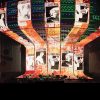


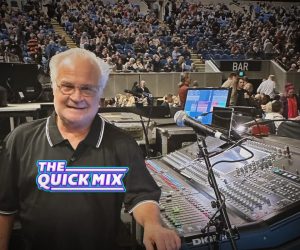



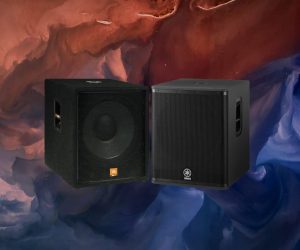





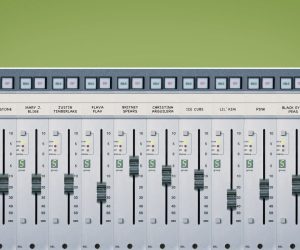



RESPONSES